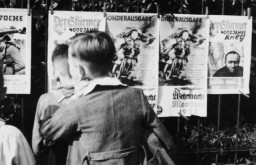You searched for: world war I
<< Previous | Displaying results 251-300 of 533 for "world war I" | Next >>
-
Russian Revolution, 1917
ArticleThe Russian Revolution consisted of two separate revolutions in 1917: the February Revolution and the Bolshevik Revolution. Learn more.
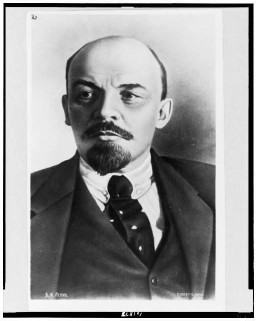
-
Erich Kästner
ArticleErich Kästner was a popular political satirist and left-liberal author whose works were burned under the Nazi regime in 1933. Learn more.
-
Karl Kautsky
ArticleKarl Kautsky was a leading Marxist and Socialist theoretician in the Austrian Social Democratic movement. His books were burned in Nazi Germany in 1933. Learn more.
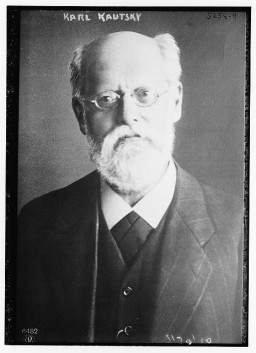
-
Life After the Holocaust: Regina Gelb
ArticleAfter WWII and the fall of the Nazi regime, Holocaust survivors faced the daunting task of rebuilding their lives. Listen to Regina Gelb's story.
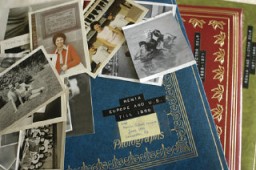
-
Ohrdruf
ArticleThe Ohrdruf camp was a subcamp of the Buchenwald concentration camp, and the first Nazi camp liberated by US troops.
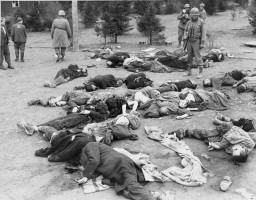
-
Featured Artifact: Model of the Lodz Ghetto
ArticleLeon Jakubowicz began constructing a model of the Lodz ghetto in the spring of 1940, after the ghetto was sealed. Explore the artifact and Leon's story.
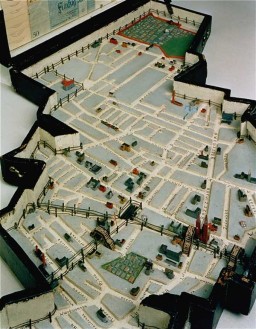
-
The German Military and the Holocaust
ArticleThe German military played a vital role in the consolidation of Nazi power and persecution and mass murder of Jews and other groups. Learn more
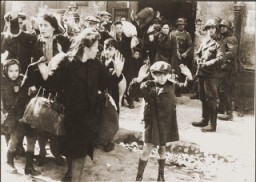
-
Life After the Holocaust: Blanka Rothschild
ArticleAfter WWII and the fall of the Nazi regime, Holocaust survivors faced the daunting task of rebuilding their lives. Listen to Blanka Rothschild's story.
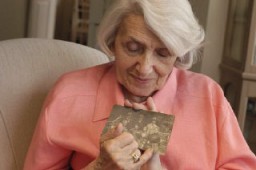
-
Collections Highlight: Auschwitz Through the Lens of the SS
ArticleKarl Höcker created a personal album of photographs chronicling SS officers’ activities at Auschwitz. Learn about this chilling collection.
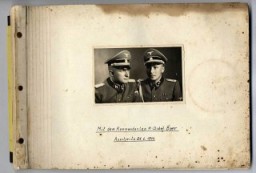
-
Holocaust Survivors and the Establishment of the State of Israel (May 14, 1948)
ArticleLearn more about the establishment of the state of Israel after World War II and its significance to Holocaust survivors.
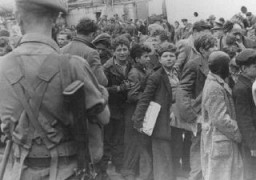
-
Hidden Children: Daily Life
ArticleSome Jewish children survived the Holocaust by hiding or living under disguised identities. Learn more about their experiences while in hiding.
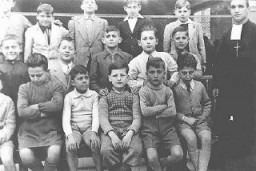
-
Leopold Page describes meeting German industrialist Oskar Schindler
Oral HistoryLeopold was a teacher in Krakow, Poland, when World War II began in 1939. While serving in the Polish army, he was captured by Germans. Leopold escaped from a prisoner-of-war transport. Soon after, he met the German industrialist Oskar Schindler. The two became friends. Leopold was forced to live in the Krakow ghetto. He later worked in Schindler's factory in Bruennlitz. He and the other Jews who worked there were treated relatively well and protected from the Nazis. After the war, Leopold moved to the…
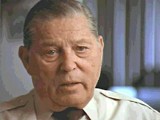
-
Third Reich: An Overview
ArticleThe Third Reich began with the Nazi rise to power in 1933 and ended with the German surrender in 1945. Learn more about Nazi Germany during World War II.
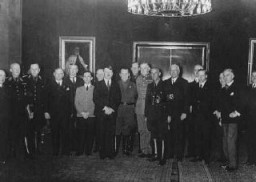
-
Leopold Page describes an act of sabotage and clandestinely listening to radio broadcasts while in Bruennlitz
Oral HistoryLeopold was a teacher in Krakow, Poland, when World War II began in 1939. While serving in the Polish army, he was captured by Germans. Leopold escaped from a prisoner-of-war transport. Soon after, he met the German industrialist Oskar Schindler. The two became friends. Leopold was forced to live in the Krakow ghetto. He later worked in Schindler's factory in Bruennlitz. He and the other Jews who worked there were treated relatively well and protected from the Nazis. After the war, Leopold moved to the…

-
Cinecittà Displaced Persons Camp
ArticleAfter WWII, many Holocaust survivors, unable to return to their homes, lived in displaced persons camps in Germany, Austria, and Italy. Read about Cinecittà DP camp.
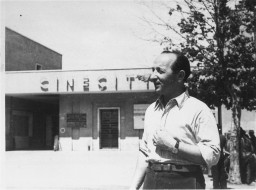
-
Leopold Page describes the liquidation of the Krakow ghetto and escaping from the ghetto
Oral HistoryLeopold was a teacher in Krakow, Poland, when World War II began in 1939. While serving in the Polish army, he was captured by Germans. Leopold escaped from a prisoner-of-war transport. Soon after, he met the German industrialist Oskar Schindler. The two became friends. Leopold was forced to live in the Krakow ghetto. He later worked in Schindler's factory in Bruennlitz. He and the other Jews who worked there were treated relatively well and protected from the Nazis. After the war, Leopold moved to the…
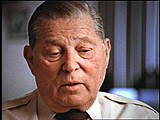
-
SS and Police
ArticleDuring World War II, SS and police leaders played a key role in the mass murder of Europe’s Jews. Learn how Himmler combined the SS and police to create a radical weapon for the Nazi regime.
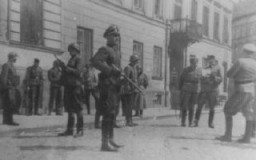
-
Benito Mussolini
ArticleBenito Mussolini’s Fascist takeover of Italy was an inspiration and example for Adolf Hitler and the Nazi Party in Germany. Learn more.
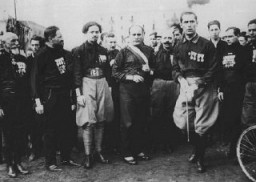
-
The Nazi Olympics Berlin 1936: Inauguration of the Olympic Torch Relay
ArticleThe 1936 Olympics were the first to employ the torch relay. Learn more about this new ritual, Nazi propaganda, and the Olympic Games in Berlin, Germany.
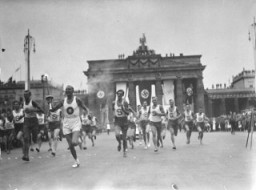
-
Belle Mayer Zeck reflects upon the sentences given to leaders of the economy
Oral HistoryBelle Mayer trained as a lawyer and worked for the General Counsel of the US Treasury, Foreign Funds Control Bureau. This bureau worked to enforce the Trading With the Enemy Act passed by Congress. In this capacity, Mayer became familiar with the German I. G. Farben chemical company, a large conglomerate that used slave labor during World War II. In 1945, Mayer was sent as a Department of Treasury representative to the postwar London Conference. She was present as representatives from the Allied nations…
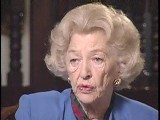
-
Political Prisoners
ArticleHitler's political opponents were the first victims of systematic Nazi persecution. They were incarcerated without trial and under conditions of great cruelty.
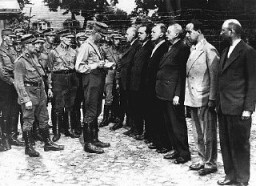
-
Sarah Judelowitz
ID CardSarah, born Sarah Gamper, was one of four children born to a Jewish family in the Baltic port city of Liepaja. Her parents owned a general store there. At the outbreak of World War I, Sarah was studying piano at a conservatory in Russia. During World War I, she remained there to serve as a nurse. She returned to Liepaja, and after marrying Herman Judelowitz in 1920, settled there. 1933-39: Sarah and Herman operated a shoe store in the front of their small shoe workshop. By 1935 they had three daughters,…
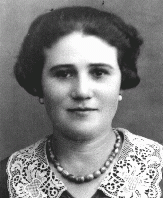
-
Flight and Rescue
ArticleExplore the story of over 2,000 Polish Jewish refugees who fled east to escape war-torn Europe. They sought safety in such distant places as China and Japan.
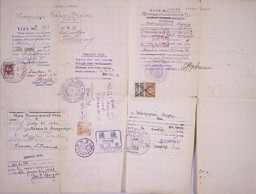
-
Flag graphic for US 1st Infantry Division
PhotoA digital representation of the United States 1st Infantry Division's flag. The US 1st Infantry Division (the "Big Red One" division) was formed in 1917 and fought in World War I. During World War II, they were involved in the Allied invasions of North Africa and Italy, as well as D-Day and the Battle of the Bulge. Additionally, the division captured the city of Aachen and liberated Zwodau and Falkenau an der Eger, two subcamps of Flossenbürg. The 1st Infantry Division was recognized as a liberating…
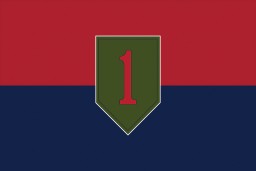
-
Flag graphic for US 2nd Infantry Division
PhotoA digital representation of the United States 2nd Infantry Division's flag. The US 2nd Infantry Division (the "Indianhead" division) was created in 1917 and fought in World War I. During World War II, they were involved in D-Day and the Battle of the Bulge. They also captured the cities of Leipzig and Hadamar. Additionally, the division overran Leipzig-Schönefeld, a subcamp of Buchenwald, and liberated prisoners at the Spergau/Zöschen camp. The 2nd Infantry Division was recognized as a liberating unit…
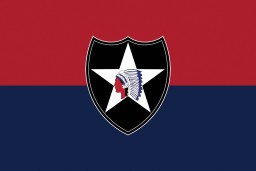
-
Lithuania
ArticleAs part of the Holocaust, the Germans murdered about 90% of Jews in Lithuania. Read more about the tragic experience of Lithuanian Jews during World War II.
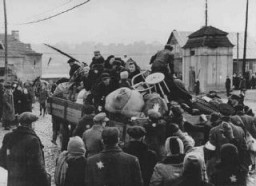
-
Danzig - Photographs
Media EssayFollowing World War I, the Treaty of Versailles (1918) declared Danzig to be a free city administered by Poland and the League of Nations. Germany resented the loss of this largely German city. After invading Poland in September 1939, Nazi Germany annexed Danzig.
-
Insignia of the 1st Infantry Division
PhotoInsignia of the 1st Infantry Division. The 1st Infantry Division's nickname, the "Big Red One," originated from the division's insignia, a large red number "1" on a khaki field. This nickname was adopted during World War I, when the 1st was the first American division to arrive in France.
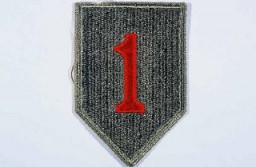
-
Insignia of the 84th Infantry Division
PhotoInsignia of the 84th Infantry Division. The 84th Infantry Division derives its nickname, "Railsplitter" division, from the divisional insignia, an ax splitting a rail. This design was created during World War I, when the division was known as the "Lincoln" division to represent the states that supplied soldiers for the division: Illinois, Indiana, and Kentucky. All figured prominently in the life of President Abraham Lincoln, of log-splitting legend.
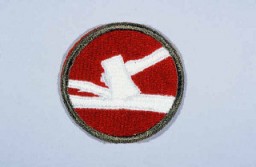
-
Insignia of the 86th Infantry Division
PhotoInsignia of the 86th Infantry Division. The 86th Infantry Division developed the blackhawk as its insignia during World War I, to honor the Native American warrior of that name who fought the US Army in Illinois and Wisconsin during the early nineteenth century. The nickname "The Blackhawks" or "Blackhawk" division is derived from the insignia.
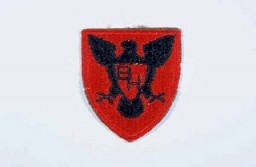
-
Insignia of the 42nd Infantry Division
PhotoInsignia of the 42nd Infantry Division. The nickname of the 42nd Infantry Division, the "Rainbow" division, reflects the composition of the division during World War I. The division was drawn from the National Guards of 26 states and the District of Columbia. It represented a cross section of the American people, as the rainbow represents a cross section of colors.
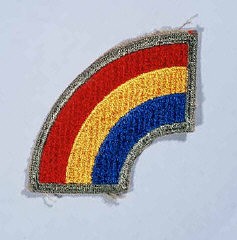
-
Insignia of the 36th Infantry Division
PhotoInsignia of the 36th Infantry Division. The 36th Infantry Division, the "Texas" division, was raised from National Guard units from Texas and Oklahoma during World War I. The "T" in the division's insignia represents Texas, the arrowhead Oklahoma. The division was also sometimes called the "Lone Star" division, again symbolizing its Texas roots.
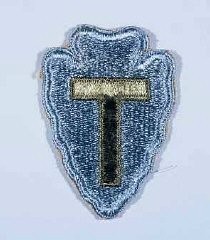
-
Insignia of the 80th Infantry Division
PhotoInsignia of the 80th Infantry Division. The nickname of the 80th Infantry Division, the "Blue Ridge" division, reflects the home states of the majority of soldiers who formed the division during World War I: Pennsylvania, West Virginia, and Virginia. The Blue Ridge Mountains run through these three states.
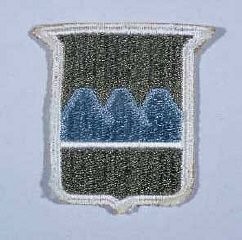
-
Artist on the Blacklist: Ludwig Meidner
ArticleLudwig Meidner was an Expressionist artist and poet. He was on the list of banned writers and artists in Nazi Germany. Monographs about him were burned in 1933.
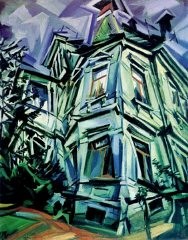
-
Werner Hegemann
ArticleWerner Hegemann was a city planner and author. The Nazis opposed his views of American architecture and German historical figures. His book was burned in 1933.
-
Morris Hillquit
ArticleMorris Hillquit was a prominent theoretician of the socialist movement in the United States. His work was burned in the Nazi book burnings of 1933. Learn more.
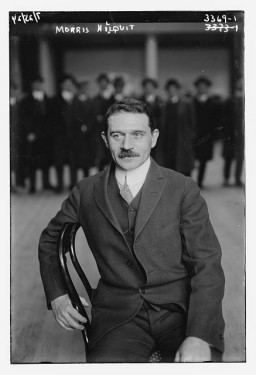
-
Vladimir Lenin
ArticleVladimir Lenin was the leader of the new Soviet government after the Russian Revolution of 1917. His works were burned in Nazi Germany in 1933. Learn more.

-
Kurt Tucholsky
ArticleKurt Tucholsky was a German satirist who criticized the Nazis during their rise to power. In 1933, his works were burned under the Nazi regime. Learn more.
-
The Weimar Republic
SeriesSeries of articles on the Weimar Republic (1918–1933), a liberal democratic republic founded in Germany in the aftermath of World War I.
-
Lvov
ArticleNazi Germany occupied Lvov, Poland in 1941. Learn about Lvov during World War II, the establishment of the Lvov ghetto, and deportations of Jews from there.
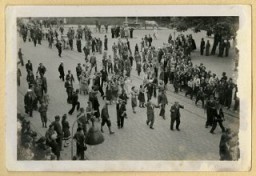
-
Benjamin (Beryl) Ferencz describes how he became involved in preparations for the Subsequent Nuremberg Proceedings
Oral HistoryBen was born in a small village in the Carpathian Mountains of Transylvania in Romania. When he was an infant, his family moved to the United States. Ben attended Harvard University, where he studied criminal law. Ben graduated from Harvard University Law School in 1943. He joined a US anti-aircraft artillery battalion that was training in preparation for an Allied invasion of western Europe. At the end of World War II in Europe, Ben was transferred to the war crimes investigation branch of the US Army. He…
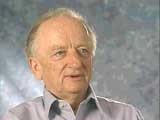
-
Franz Wohlfahrt describes imprisonment in Graz
Oral HistoryFranz and his family were Jehovah's Witnesses. Germany annexed Austria in 1938. After World War II began, Franz's father was executed because, as a Witness, he opposed war. In 1940, Franz refused to participate in military training and would not salute the Nazi flag. He was imprisoned, interrogated by the Gestapo (German Secret State Police) in Graz, and sentenced to five years of hard labor in a camp in Germany. Franz was liberated by US forces in 1945.
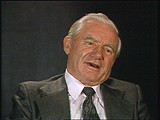
-
Belle Mayer Zeck describes the emotional toll of the Nuremberg trials
Oral HistoryBelle Mayer trained as a lawyer and worked for the General Counsel of the US Treasury, Foreign Funds Control Bureau. This bureau worked to enforce the Trading With the Enemy Act passed by Congress. In this capacity, Mayer became familiar with the German I. G. Farben chemical company, a large conglomerate that used forced labor during World War II. In 1945, Mayer was sent as a Department of Treasury representative to the postwar London Conference. She was present as representatives from the Allied nations…
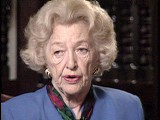
-
Communism
ArticleCommunist ideas spread rapidly in Europe during the 19th and 20th centuries, offering an alternative to both capitalism and far-right fascism and setting the stage for a political conflict with global repercussions.
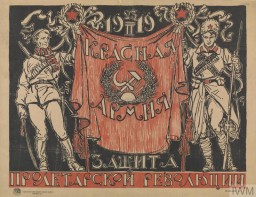
-
The Holocaust in Subcarpathian Rus and Southern Slovakia
ArticleLearn more about the history of the Transcarpathian region of Ukraine (historically known as Subcarpathian Rus) during World War II.
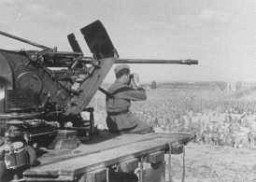
-
Joseph Greenblatt
ArticleRead the Jewish Partisan Educational Foundation's short biography of Joseph Greenblatt.
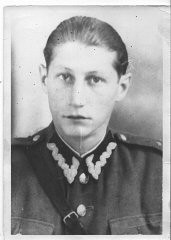
-
Sam Gruber (Jewish Partisan Educational Foundation biography)
ArticleRead the Jewish Partisan Educational Foundation's short biography of Sam Gruber.
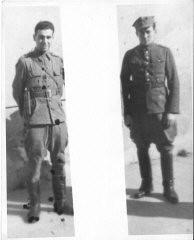
-
Life After the Holocaust: Aron and Lisa Derman
ArticleAfter WWII and the fall of the Nazi regime, Holocaust survivors faced the daunting task of rebuilding their lives. Listen to Aron and Lisa Derman's story.
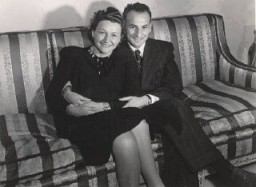
-
Martin Niemöller: Biography
ArticleProtestant pastor Martin Niemöller emerged as an opponent of Adolf Hitler and was imprisoned in camps for 7 years. Learn about the complexities surrounding his beliefs.
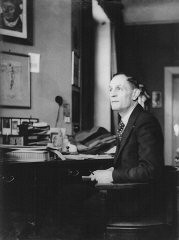
-
Nazi Propaganda
ArticleNazi propaganda had a key role in the persecution of Jews. Learn more about how Hitler and the Nazi Party used propaganda to facilitate war and genocide.
